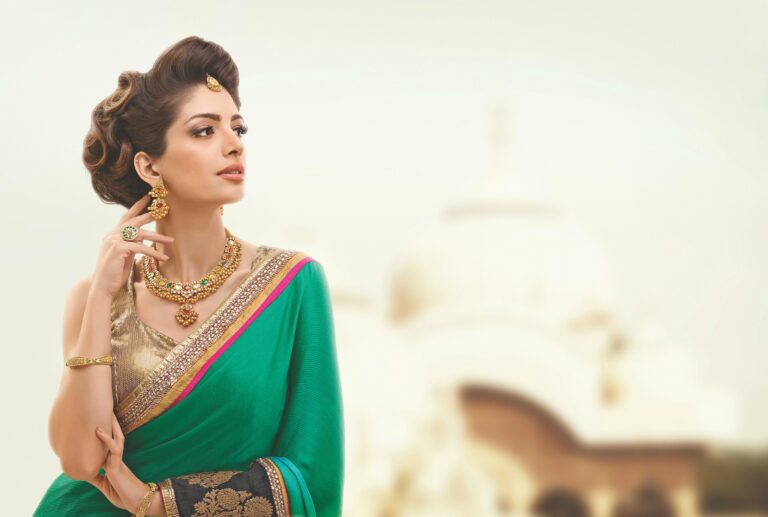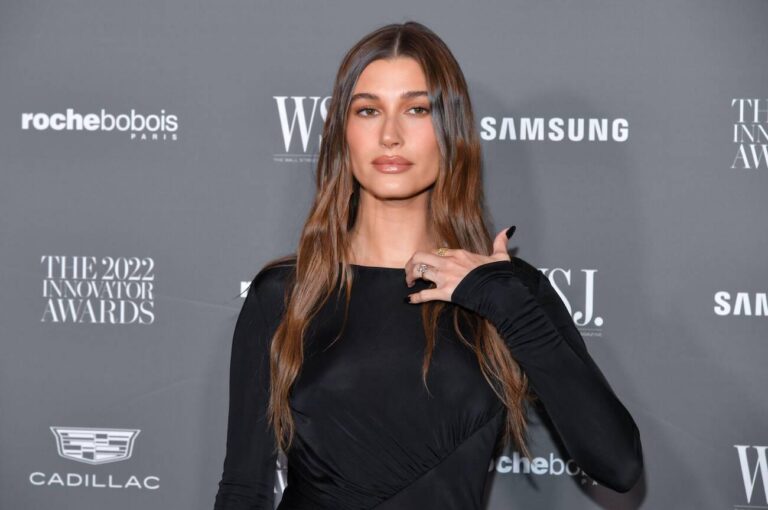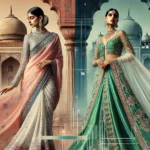This fashion world is undergoing a great transformation and Indian designers are at the forefront of this eco-friendly movement. With the rising needs of sustainable practices, the world is focusing on how to keep changing the face of fashion without destroying the planet. From traditional methods to modern innovations, the road towards eco-friendly fashion in India inspires and requires it.
The Rise of Sustainability in Indian Fashion
India is, therefore, best suited to lead the way in sustainable fashion, with its textile heritage and craftsmanship. There’s an awareness among designers that the current fast fashion has to give way to more thoughtful production methods. Sustainable fashion is not just eco-friendly fabric usage; it represents the aspect of ethical labor practices, no wastage, and timeless designs that can stand the test of trends.
Indian Designers Leading the Eco-Friendly Movement
- Sabyasachi Mukherjee
Known for his luxurious designs, Sabyasachi combines traditional handlooms with natural dyes in his creations. His use of organic fabrics and support for local artisans is the epitome of sustainability.
- Anita Dongre
A pioneer in the eco-friendly fashion scene, Anita Dongre is synonymous with sustainable luxury. Her label promotes eco-friendly practices by using organic materials and endorsing fair trade policies. The Anita Dongre Foundation actively supports rural artisans, empowering them through fashion.
- Rahul Mishra
Rahul Mishra’s collection often portrays the beauty of nature. He always believes in sustainable practices by using intricate hand embroidery and organic fabrics. He follows slow fashion, so each piece is made with care and precision.
- Ritu Kumar
Ritu Kumar is one of the veteran designers who beautifully merges tradition with modern sensibilities. She focuses on eco-friendly practices, such as using sustainable fabrics and reinvigorating dying crafts so that these crafts are preserved for generations to come.
- Payal Pratap
Payal Pratap is known for her earthy aesthetics, where she incorporates natural fibres and handwoven fabrics into her designs. Her collections often feature elements of sustainable living, resonating with the eco-conscious consumer.
Eco-Friendly Fashion: The Elements
- Natural and Organic Fabrics
Indian designers are now using organic cotton, hemp, bamboo, and khadi, reducing the environmental impact caused by synthetic materials.
- Traditional Craftsmanship
Handloom weaving and hand embroidery not only minimize the reliance on machines but also sustain the artisans in their living.
- Zero Waste Production
Many designers have zero waste policies, where they recycle or re-use the fabric cut offs. Mostly, they get it done creatively.
- Eco-Friendly Dyeing Techniques
The natural dyes are plant and mineral-based, which are getting more attention due to harmful chemical dyes that pollute the water and land.
Why Sustainable Fashion Matters?
- Environmental Impact: The move towards sustainable practices saves resources such as water and energy and reduces pollution.
- Heritage Preservation: Supporting traditional crafts preserves old techniques and cultures through the designers.
- Consumer Awareness: The contemporary buyer is more aware and looks for brands that share their values of sustainability and ethics.
How to Adopt Sustainable Fashion
- Choose brands and designers who are sustainable fashion advocates.
- Select timeless pieces rather than fast-fashion trends.
- Support local artisans and handloom products.
- Reuse, recycle, and upcycle your wardrobe whenever possible.
Indian designers are proving that sustainability and style can coexist beautifully. As they champion eco-friendly fashion, they not only redefine luxury but also set an example for the global fashion industry. By supporting their efforts, we contribute to a greener, more sustainable future—one stylish step at a time.








